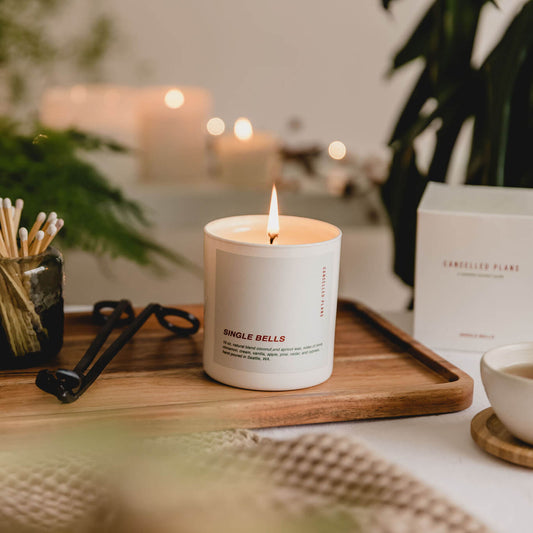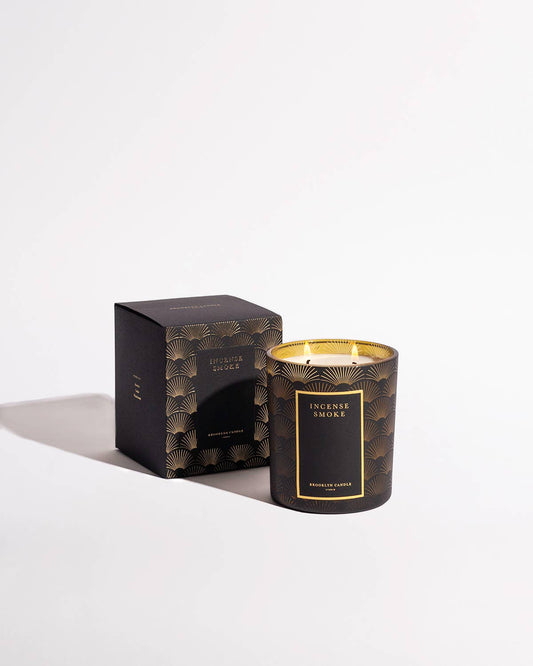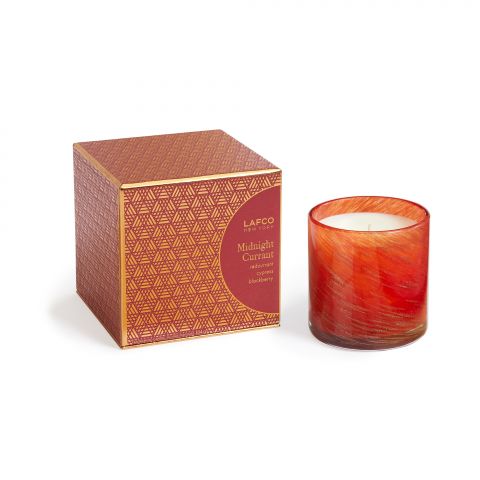It’s officially Christmastime and one of the staple scents in the home this season is the fresh smell of pine. Who doesn’t love the fresh pine scent of a lush, green Christmas tree? It brings back memories of festive family moments and conjures up images of sparkly Christmas lights, shiny tinsel and of course a big pile of brightly wrapped Christmas presents!
There isn’t one scent that defines the festive period – instead, our homes become layered with nostalgic notes that are as important to embracing the Christmas spirit as any other decoration, meal, or tradition. From fresh Christmas tree pine, orange and clove pomander decorations, hot cider and mulled wine, all the way to the glittering scent of fresh snow, Christmas fragrances are incredibly evocative.
Of course, we don’t all live in snowy log cabins, baking sweet treats daily and enjoying real fireplaces – sometimes we have to get creative with how we add these layers of fragrance into our homes to get the same effect. This is where our expert candle makers come in. We’ve rounded up some of the best Christmas scented candles you can burn throughout the festive period to fill your home with layers of seasonal scent.
The first festive fragrance that every home should be imbued with during December is the fresh woody notes of pine needles and fir trees. We’ve rounded up all our favourite Christmas tree-inspired scents here so that you can get that “real tree” scent without any of the mess.
With the festive season comes a need for warmth and cosiness. The fragrance of spices, baking, and traditional decorations entwine to create a sense of nostalgia that sweeps us back to magical childhoods both imagined and experienced. We rounded up all our favourite winter spice-infused candles here.
A roaring fireplace is a winter staple, and even if you don’t have the real thing, adding fragrant smoky scents to your home will create a wonderful ambiance. We’ve got an amazing selection of fireplace-inspired scents making it incredibly hard to pick a top three. You can view all our smoky fragrances here.
If you’ve ever spent time in the winter mountains, you’ll know how glorious the scent of fresh snow, glittering landscapes, and frosted trees can be. These notes are more delicate, making them harder to capture in candle form, but some of our favourite scent makers have done so beautifully. Think early mornings as you step outside the log cabin, breathing in the cold fresh air.
Unfortunately as the festive season progresses, needles seem to make their way into every corner of your home, and of course your new novelty xmas socks. Bring the festive fir fragrance into your home this winter, minus the spikes, by lighting one of these beautiful Christmas tree scented candles.
Our Favourite Festive Pine Candle Scents
For those of us eager to get into the festivities, the very first day of December marks the buying of a tree and a decoration session, whilst many wait a little further into the month before doing so.
Either way, the Christmas tree is adored by all the family and bedecked with the most beautiful ornaments, some pieces passed down through generations. On a cold winter’s evening, there’s nothing quite like dusting off the box marked ‘Xmas decs’ and getting together to make your mark on your proudly placed tree.
Have you ever wondered why we welcome this scent into our homes in December? Before the big day rolls around, today on the blog, we wanted to dive into the history behind the Christmas tree and how it has evolved into one of the most recognised festive symbols across the world.
Coniferous trees have long grown in the great outdoors and have been used as an emblem at wintertime for thousands of years. Rooted in pagan tradition, fir branches were often placed in the home to celebrate the winter solstice, a date in the calendar that marks midwinter and the return of the sun.
Unsurprisingly, Evergreen reminded people of the abundance of life that comes with the summer months, and the rebirth that happens with the onset of spring. We can all agree that winter is a dark and bleak time of the year, so back when people didn’t have the means of adorning their homes with artificial fairy light and bright decorations, the evergreen plant was a sign of eternal life; a move away from darker days and towards the light again.
Exactly when fir became used in a Christmas sense, no one is quite too sure, but it is approximated to have originated about 1000 years ago in Northern Europe.
Plenty of historical figures lay claim to creating the Christmas tree tradition, particularly Martin Luther, who is said to be the first person to light a candle atop his tree, inspired by starlight making its way through the trees at Christmastime.
But it was in the Renaissance when the first clear records of trees being used as part of Christmas tradition can be found, especially on the stage, where the nativity and the story of creation were commonly depicted; evergreen was humbly named the ‘paradise tree’, symbolic of the abundant fruit trees found in the Garden of Eden at a time when Christmas Eve was considered Adam and Eve’s feast day.
Candles were often fastened to symbolise members of the family, a precursor to the modern decorations we still use on our trees today. And in these early days, the tree wasn’t always fir either. People often turned to cherry, hawthorn or even just a branch, and if they couldn’t afford something real, they’d make wooden pyramids to decorate with edible treats and candlelight.
It was under Queen Victoria that the Christmas trees really came into its own. The Queen’s husband, Albert, was German and brought the Northern European custom of Christmas trees with him to Britain. Once the monarchy was seen celebrating Christmas with a decorated tree in the home and presents hanging from its branches, the nation followed suit.
Soon, the rest of the world bought into the image of a happy family, standing around the tree, united through the fresh scent of pine, the exchanging of gifts and the beauty of a decorated piece of nature in the home.
Today, Christmas trees are a decorative staple in homes across the world. And no tree is the same. As more people have adopted the tradition, more trees have evolved into their own, adorned with decorations passed down through generations or styled to meet the aesthetic of the home.
Whether you opt for a real tree picked out from hundreds at your local farm or you’re happy to settle for an artificial one, each tree signals the sense of family, identity and connection that comes with Christmastime.
As the fresh smell of fir fills your home this December, think about how this wonderful tradition has not only brought you and your loved ones, but generations of people, together to congregate around the beautiful branches of an evergreen tree.
If you have an artificial tree or you want to enhance the smell of fresh pine in your home this December, then shop our favourite Christmas tree scents here.





